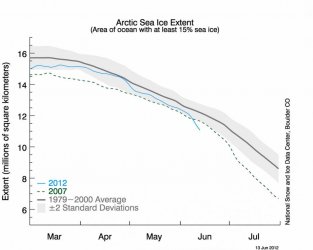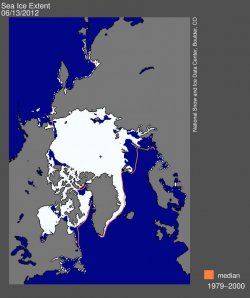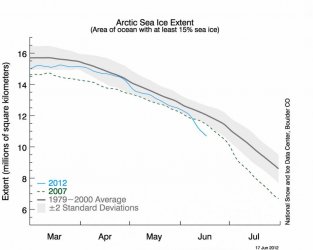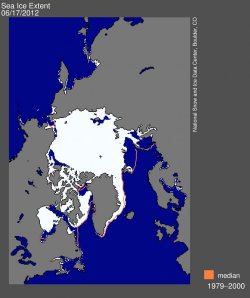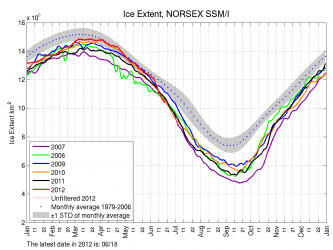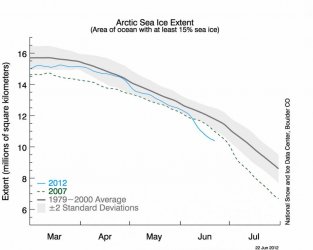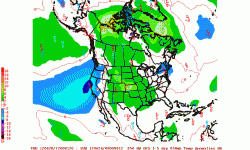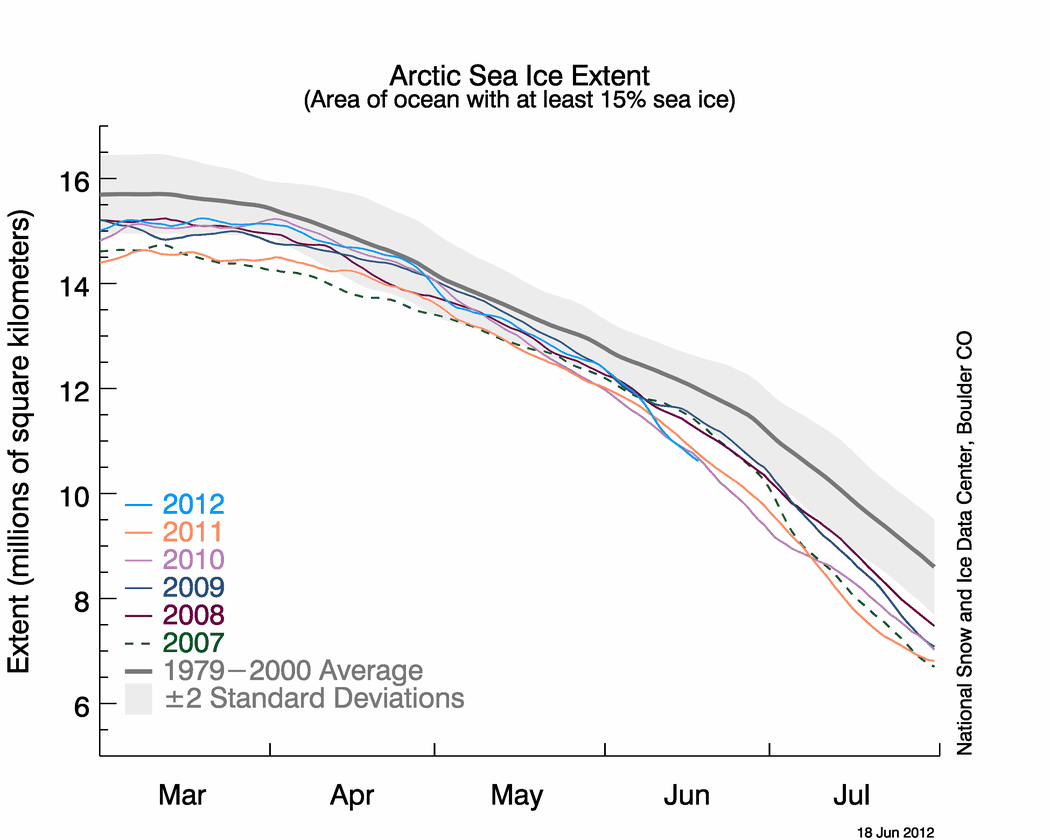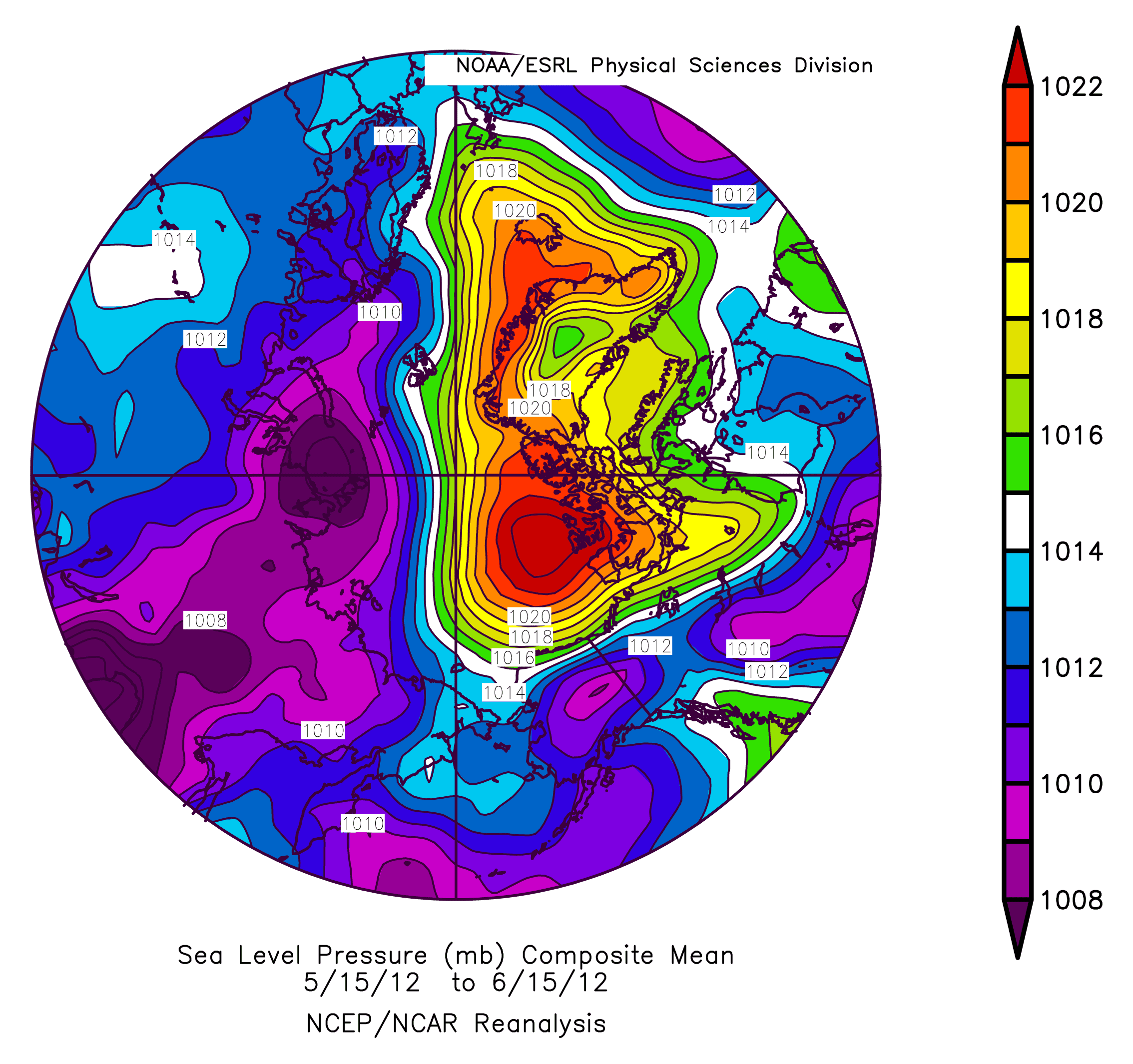ScienceRocks
Democrat all the way!
- Banned
- #1
As of June 10th the volume is at record low levels and the area has just want below 2007!
We will be discussing the race for the record in this thread! What's even more AMAZING is the fact that we were almost to avg this winter!
Weather patterns are everything this year like the last 4 years as that will tell where we end up! If we see a strong ridge(arctic dipole) like 2007 that lasts through the season...Well, this will easly become number one, but if we see 3-5 weeks of low pressure like 2010, 2011 in the heart of the melt season we may end up in 2 or 3rd place.
We will be discussing the race for the record in this thread! What's even more AMAZING is the fact that we were almost to avg this winter!
Weather patterns are everything this year like the last 4 years as that will tell where we end up! If we see a strong ridge(arctic dipole) like 2007 that lasts through the season...Well, this will easly become number one, but if we see 3-5 weeks of low pressure like 2010, 2011 in the heart of the melt season we may end up in 2 or 3rd place.
Attachments
Last edited:

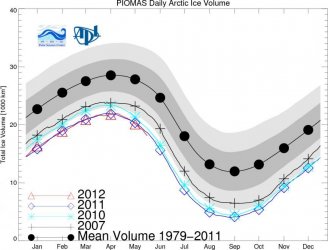
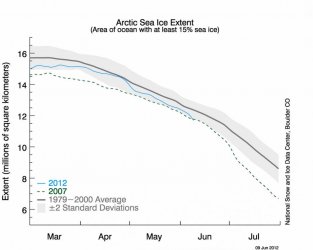


 ..........the true believers dont want you knwing about this )
..........the true believers dont want you knwing about this )